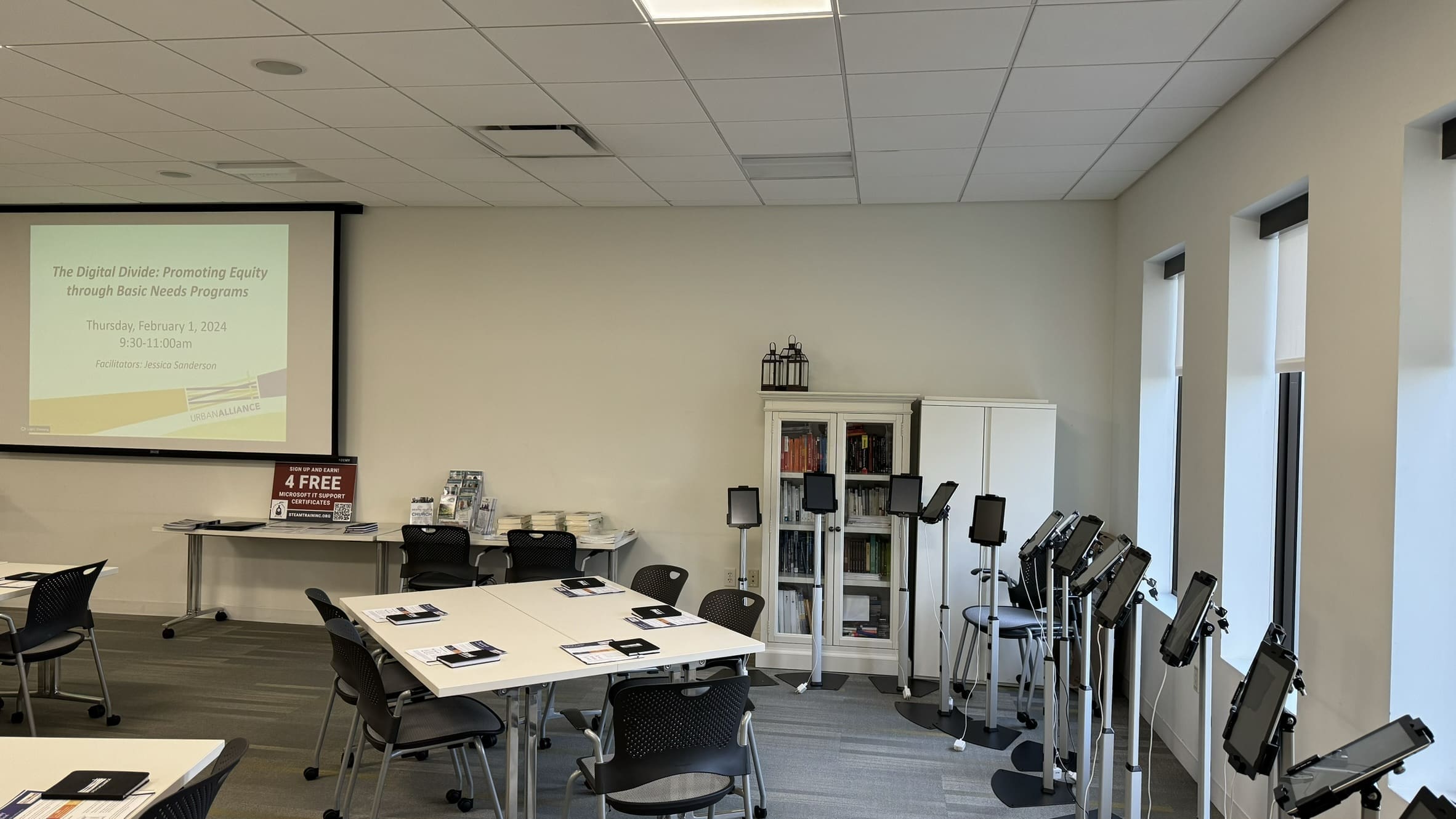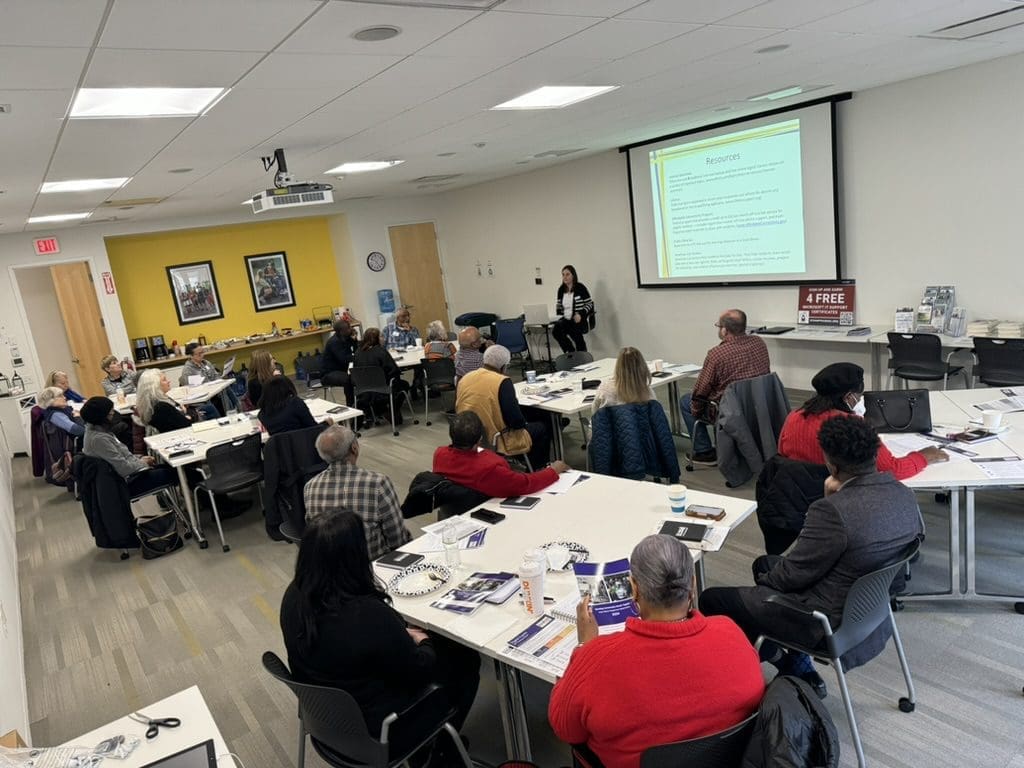As the new year gets underway, Urban Alliance is working to bring more attention to the issues around the “Digital Divide” in our communities – we all do not have the same access to the internet, the devices needed to thrive in an increasingly digital world, or the training and understanding to use those resources and tools.
Several of our UA Network Partners were able to attend a training called The Digital Divide: Promoting Equity through Basic Needs Programs where leaders were able to explore how poverty can be both the cause and an effect of this disparity.

The first part of the problem: Device Access
As many of us know, smart phones, tablets, and laptops all come with a significant cost. These are the tools we use to navigate our world – from literally finding your job interview via GPS; to the hundreds of websites receiving job applications online. Not having access to a device can make a world of difference in someone’s ability to apply for assistance programs, apply for a job, communicate with medical professionals, or even just stay in touch with a support network.
Urban Alliance was thrilled to be able to share, as a part of this training, iPad kiosks for programs to make available to their neighbors and clients. These donated devices were installed into sturdy stands by volunteers and made available to programs like food pantries and community meals in an effort to provide a way for someone to gain access to digital resources.
Leaders discussed ways they might put these devices to use: providing ways to apply for assistance benefits; giving someone a way to set up an email as part of a job search, or provide support through the process of using a new website.
Download our Digital Equity Resources for FREE
You can receive the training materials used in Urban Alliance’s Digital Equity Training!
Resource Download
"*" indicates required fields
Devices are just the beginning
Of course, access to a reliable device is just the beginning. Internet Access is required for most digital tools to become truly useful, so Urban Alliance highlighted Federal programs like Lifeline (lifelinesupport.org) and the Affordable Connectivity Program (AffordableConnectivity.gov), as well as programs of local internet providers. All of these help people get online to get to the resources and opportunities available there.
We also discussed Digital Literacy and the challenges presented by technology that is always developing, always updating, and quickly changing. Providing training and support to the people who need it makes an internet connected device truly useful.
Make a Difference
If issues surrounding Digital Equity are important to you, or if you’d like to find out more about this issue, there are a few ways you can engage with us as we begin our efforts to engage this issue.
- Download the Free Resources we provided at the training – understand the problem, consider some potential solutions
- If your church or organization is interested in partnering with Urban Alliance to address this and other issues around the problem of poverty, explore becoming part of the UA Network
- If you are wondering what an individual or small group can do in the face of such a large problem? Consider volunteering or supporting Urban Alliance directly.






